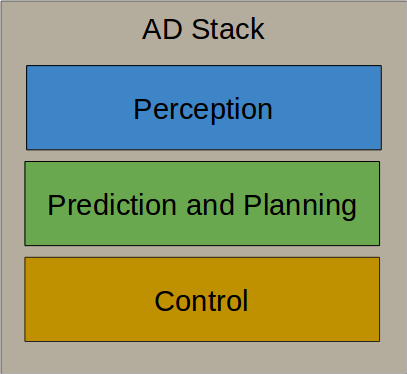Thesis or Guided Research in Autonomous Driving related topics
Abstract
The field of Autonomous Driving is currently one of the strongest pull factors for cutting-edge Computer Vision and Machine Learning approaches. The task of driving autonomously is a challenge due to the high number of correlating sub-problems that need to be solved. The autonomous driving stack consists of 3 main parts.1. In the Perception part high level representations get extracted from raw sensor data, including object detection, tracking, pose estimation, road and lane detection, traffic light and traffic sign detection, localization, etc.
2. The Prediction and Planning block uses this high level information to predict the future path of other traffic participants and plan the vehicles trajectory, where both tasks are dependent on each other, e.g. depending on the actions of the ego vehicle the other agents will adjust their own planning and vice-versa.
3. The last part takes the planned trajectory and assures that the vehicle actually follows the planned path with feedback from the perception block.
 |
- Object detection in images and point clouds
- Object pose estimation using images only or in combination with depth sensors
- Ego pose estimation based on images and depth
- Trajectory prediction and validation
Requirements
Depending on the specific topic different skills are required. For SLAM related topics a general background in Computer Vision and Optimization is of advantage.Most of the Perception Modules are first developed as a prototype in Python, also the training of ML components, the evaluation and post-processing are mostly done in Python.
Therefore good Python skills are required.
Most components on the inference side have strict real-time requirements and are written in C++ using ROS as an I/O interface.
Therefore good C++ skills are required.
If you are interested , please contact us via e-mail: Nikolas Brasch Federico Tombari
| Students.ProjectForm | |
|---|---|
| Title: | Thesis or Guided Research in Autonomous Driving related topics |
| Abstract: | |
| Student: | |
| Director: | Federico Tombari |
| Supervisor: | Nikolas Brasch |
| Type: | DA/MA/BA |
| Area: | Machine Learning, Computer Vision |
| Status: | open |
| Start: | |
| Finish: | |
| Thesis (optional): | |
| Picture: | |